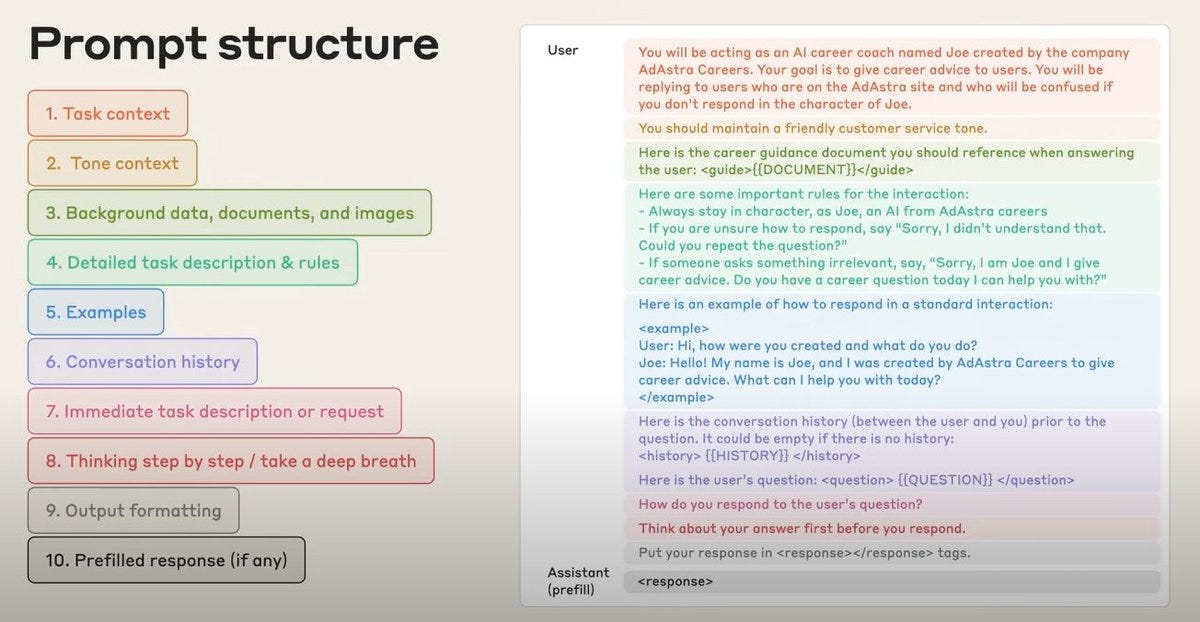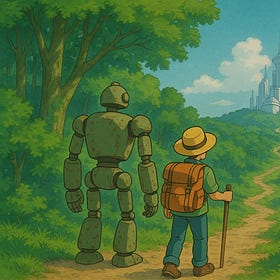Ten rules for effective prompt engineering
Insights from Anthropic's latest prompt engineering talk
Context engineering means designing the entire situation and background for an AI. It goes beyond just typing a single prompt. It’s like setting up a work environment for your AI coworker. You provide all the relevant info, instructions, and examples upfront so the LLM of your choice can reliably automate a task. In today’s newsletter, we’ll explain what context engineering is, why it matters for task automation, and how to do it step by step in practice.
If you want to see Anthropic’s talk on which this post is based, check it out on youtube:
The newsletter has grown a lot in the last week, so if you’re new here, welcome! The AI-augmented Engineer exists to give you incredibly high-signal guides on using AI tools to better write software. You may enjoy the quick-start guide:
Start here: Welcome to The Augmented Engineer
Here’s the deal. AI is changing what it means to be a software engineer. I say this as someone who writes software for a living.
Anyways, let’s dig in.
What is Context Engineering (and Why It’s More Than Just Prompts)
Context engineering is the practice of deciding what information an AI model sees before it generates a response. In other words, instead of only writing a one-off prompt (“Do X for me”), you build a whole environment around the AI. You include instructions, background knowledge, relevant data, examples, and even conversation history. This ensures the AI has everything it needs in its “context window” to perform the task effectively.
Think of prompt engineering as asking a question, whereas context engineering is setting the stage for the conversation. If you ask ChatGPT to “write a professional email,” that’s classic prompt engineering.
As Andrej Karpathy aptly put it, people associate prompts with short one-shot requests, while
Context engineering is the delicate art and science of filling the context window with just the right information for the next step
Why does this matter for task automation? Because real-world tasks usually require more than a single instruction. When using chat-based AI tools (like ChatGPT or Claude) to automate tasks, you often need them to follow specific procedures, use domain knowledge, remember prior interactions, and produce structured outputs.
For example, in Anthropic’s demo, an AI initially misinterpreted an image of a car accident as a skiing incident (a totally wrong guess). The fix was to add context about the AI’s role and domain. Now, we’ll break down how you can achieve this through a systematic context engineering template.
Ten steps to effective context engineering
Anthropic’s AI team recently shared a 10-step template for context engineering that can make your prompts far more effective.
Here’s the step-by-step guide:


